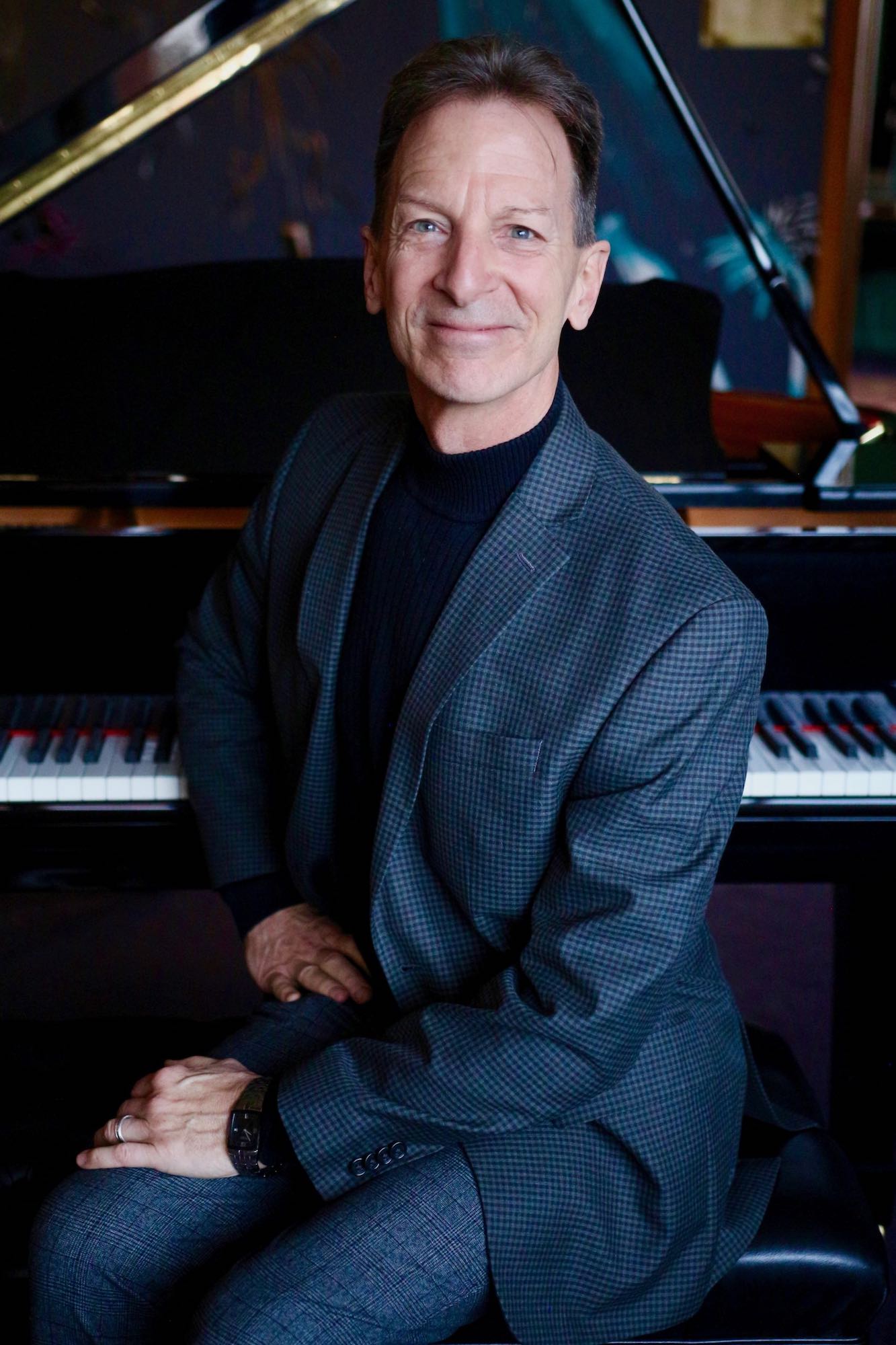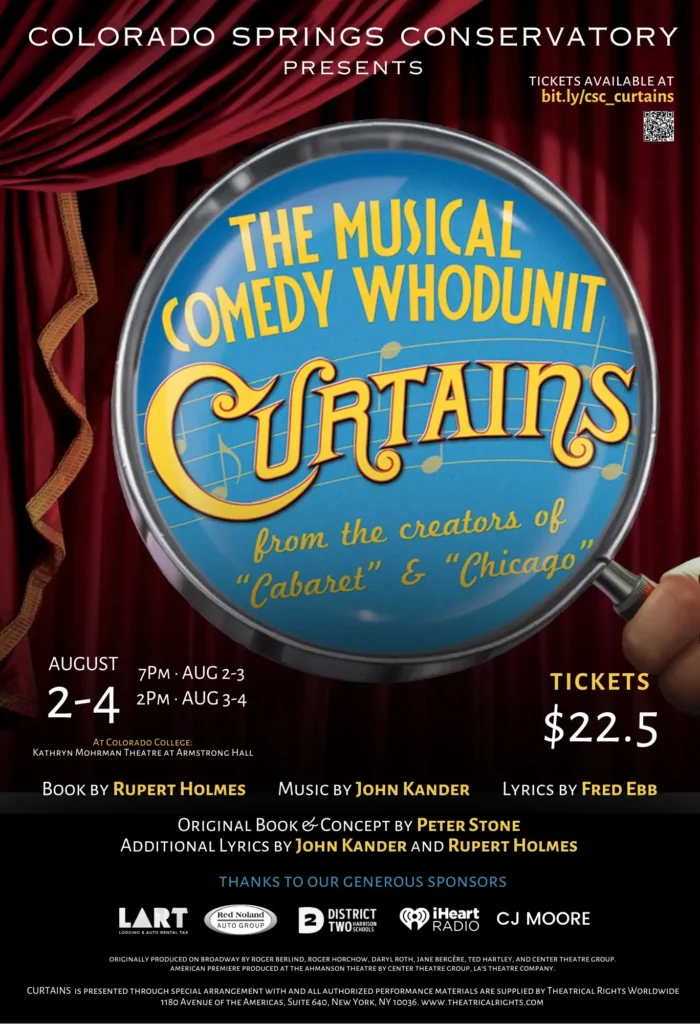
This Article was written and published October 2021 by The Colorado Springs Business Journal | Author: Loring Wirbel
When he accepted the position of chief operating officer at Colorado Springs Conservatory in July of 2020, Scott Marble never imagined he’d be stepping into the acting CEO position a year later.
Conservatory founder Linda Weise recently assumed the president’s position at the new nonprofit Colorado Springs Community Cultural Collective, which is seeking to raise $53 million for major renovations to City Auditorium. Now Marble is in the Conservatory driver’s seat, retaining the mission of accepting all young people to learn advanced music performance, without auditions and without prerequisites.
Weise has always maintained the dream of making the Conservatory one of the premiere tenants of the auditorium, but Marble said she was careful to keep interests at arms’ length, thus giving him the task of carrying on her original Conservatory mission. Marble said he has no intention of radically changing or broadening the music school for youth, but is focused on shepherding it through the tough pandemic years and the challenging post-pandemic years to come, when music recording and performance will go through many iterations as the world moves to a semblance of normal.
Marble brings the broad array of talents needed for such a mission. He pursued an undergraduate degree in hospitality and hotel management from the University of New Hampshire at Durham, but shifted to a professional ballet career while still in his senior year. After a decade dancing with companies in Indianapolis, Salt Lake City and Las Vegas, Marble returned to hotel and resort management, working for The Mirage in Las Vegas, and later for Cheyenne Mountain Resort and Garden of the Gods Resort in Colorado Springs. The opportunity to join the Conservatory was the culmination of many years of working with Weise and members of the board. Marble said his experiences dovetailed ideally for his new post, since hospitality work involves a little bit of entertainment, while performance art requires a bit of public presence.
You’ve had an interesting career bouncing between hospitality and arts. Did this all happen by accident?
The stumbling into arts was an accident, at least in formal training. I grew up in a musical house; my mother was a church organist and sang in regional choirs. I took some piano as a kid. I liked it, but I did not want to pursue that rigorous a musical study program. It wasn’t until I got into college and finished an intense semester in sciences, I realized despite the medical backgrounds of my father and brothers, it only took a semester of biochemistry, calculus, until I said ‘Oh, no.’ I had discovered the hospitality school, and had summer jobs in food delivery. But I needed a four-credit art course and stumbled across Ballet I. I had one semester of general dance, and realized there’d be no homework — how hard could it be? I was 19 and had no idea I had ideal toes and hips for ballet. I worked under Larry Robertson, formerly of the Boston Ballet. It was perfect timing, and was introduced to Swan Lake, Nutcracker, things I normally would never have been introduced to that early. And the dean of the hotel school was an arts supporter.
In my senior year of hospitality school, Advanced Food and Beverage put on two banquets — one semester you had to show your skills in the front of house, one semester you were in back. For my second banquet, front of the house, my general manager said ‘I want to do a Nutcracker dinner,’ since it was near Christmas — everything themed for Nutcracker ballet. We literally built the menu around that, cold sugar plum soup and the like, and we performed excerpts from the Nutcracker. And of course, most artists end up going into the hospitality industry for extra work. I bartended in Salt Lake City, and was a barista in Salt Lake City.
Was there a moment where you had to decide between being a professional dancer or going into hotel management?
There was — probably at the end of my junior year, when a dance teacher said, ‘You need to go to New York.’ I was blessed with supportive parents who told me to finish the degree and then spend eight months pursuing dance. I told the dean of the school to leave me out of the hotel recruitment tours. I did not want any temptation of money. I gave myself three years, then after eight weeks at the Boston program, I made connections to the Indianapolis Ballet Theatre, and was offered a position. By then, I was too old for the Boston Ballet program, and was smart enough to realize that. I wasn’t 15 or 16, I was 21, which made me almost too mature. I moved to Indiana and spent a great three years.
But in that progression from Indiana to Salt Lake City to Las Vegas, you never looked back at your three-year commitment, at that time you remained a committed dancer.
Oddly enough, when I concluded my Salt Lake City years, the executive director of the ballet company asked if I had ever considered arts management. That’s when I realized how these worlds could come together. In the back of my head, I always thought I’d come back to hospitality. My Nevada coffee house job introduced me to many in the hotel industry in Las Vegas. I met my wife in Vegas, who was a native of Colorado Springs. We always thought there should be a finite time I would be a dancer, because the hotel industry represented more stability and reliable health plans, and we thought our time in Vegas would also be finite.
What brought you to the Springs?
Holly had ties here, and I always loved Colorado — particularly having gone to Aspen dance residencies tied to Ballet West, from 1987 to 1991. It made sense to us, when I left the stage, and Holly had an injury that took her out the next year. We said, ‘Vegas is nice, but we don’t want to be here forever.’ I was at Mirage during the golden era of Siegfried and Roy, Caesars Palace before the renovation — the years before the new wave of hotels like Mandalay Bay. When Bellagio opened, I knew it was time to leave Mirage. We were already gone for 9/11 and then the later 2008 downturn. We’ve been here 22 years now. It was clear that there were opportunities in Colorado Springs, and Cheyenne Mountain Resort had an opening at just the right time.
How did the Conservatory relationship arise?
I have probably known Linda for 20 years, since the days when students were bringing instruments into the lobby of Cheyenne Mountain Resort — and we still do those kind of concerts today. My previous dance experience got me really involved in the kids’ performance at the resorts when Conservatory events happened. My wife and I joke that we gave Linda her ballet debut, casting her as the wicked stepmother in Cinderella. Linda joked that ‘You’re always typecasting me — I’ll always be the evil one,’ but the experience was great fun.
Will recording still be a big part of the Conservatory even in a post-COVID world?
We had already started to make that change last year. When I came here in July 2020, we were focused on doing everything possible to keep the doors open and build confidence with families. With many studies remaining online, no sporting events, many recreation places remaining closed, we were often the sole thing for kids in the fall of 2020. And the recording element of our program gave kids the chance to see that they could lay down tracks, they could mix different instruments — it was a great learning experience.
Even though we have great enrollment, the classes are broken up so that occupancy of the building is not great. Classes were no more than 10 students last year, and up to 15 now. One of the components of the Conservatory model is that yes, here are your classes but then you have individual electives, many of which are private, so it naturally fits the distancing model. Even though we had students take off their masks to sing, we had very few COVID cases, no outbreaks. As a result, we had a great summer this year — seven weeks with over 200 students. And we had record enrollment this fall — 150 students registered for what would be considered the after-school program. The biggest adjustments we’ve had to make, particularly with [Harrison School] District 2, is due to a bus driver shortage. All schools must come on different days because we don’t want to mix cohorts, and that can be a scheduling nightmare. We got a grant to do additional work with schools in southeast Colorado Springs, in District 2, particularly with special ed students, and the trickiest issue is transportation. Incidentally, we are orienting toward small transportation vehicles because of the problem of finding people with [commercial drivers licenses].
What’s the level of optimism in the city, and the support you’re getting from different stakeholders?
They’ve been great across the board. There are two stories: the way the 2020-21 school year was supported with remote options; and the development of hybrid models in 2021-22 so we could use all efforts to create in-person classes. The enrollment spoke to partners and foundations at how successful we were. We deliberately developed a range of summer camps and short-term programs for families who had long summer plans. Since Linda made this a non-audition environment from the beginning, the philosophy we promoted to students was, ‘Go ahead and try it, and we will make it work with your schedule. Start in November if you wish, we will meet you where you are.’ We encourage music theory as a foundational class, but then we encourage experimentation. A kid may come in wanting to learn the guitar, but then try three other things.


